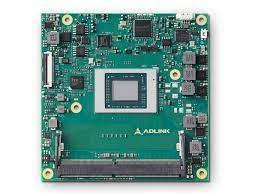If you are in the market for a new computer on module (COM), SECO's wide
selection of off-the-shelf computer on modules (COM) will reduce your
time-to-market. These systems are compatible with multiple industry standards,
including Qseven (r), SMARC, ETX, and Computer-HPC (tm).
SMARC is a Computer on Module
SMARC, or Small Modular Architecture for Reliability and Capability, is a standard for computer on modules. SMARC 2.0 supports up to four digital displays. A DP++ interface is used to connect HDMI, DVI, or DisplayPort displays. In 2.0, the LVDS interface was upgraded to dual-channel LVDS, which is capable of driving two low-resolution displays and one high-resolution display at 60 Hz. The HDMI/DP interfaces are still the same.
SMARC modules are based on ARM SoCs and are ideal for image-centric
devices. They are also capable of operating under extreme conditions, have low
power consumption, and are backward compatible with existing boards. SMARC
modules can be easily added to existing boards, which helps shorten time to
market. This type of module is a powerful and efficient solution for embedded
applications. Its modular design also allows for fast development and is
compatible with most existing platforms.
Toradex SoMs Come with Ready-to-use Operating Systems
Toradex provides scalable products with the option of pre-loaded operating systems. SoMs are pin-compatible within the same family. They also feature reserved pins for unique SoC features. The Pinout Designer Tool allows users to understand how compatible a particular SoM is. The company also standardizes hardware interface naming on Linux BSPs, enabling users to migrate to a new SoM as needed.
Toradex SoMs are designed to be easy-to-use and come with built-in
support for popular development environments and frameworks. Toradex SoMs plug
into carrier boards. They then attach the interfaces to application-specific
components and connectors. Typically, the carrier boards are easy to assemble
and are incredibly low-cost, and the SoMs themselves can be used in a wide
variety of applications.
To install Toradex OS, developers use Toradex Easy Installer software.
The Toradex Easy Installer launches from the PC. The module will load the
Toradex Easy Installer image. This is then run in the module's RAM. Users can
access the Toradex OS using VNC. The Toradex Easy Installer also provides
support for a range of other operating systems.
Connect Core(r) 6UL
The Connect Core(r) 6UL Computer on Module is a small, compact computer on a chip that is ideal for connecting your products. With its 3.2mm diameter round metalized area, this computer on a chip offers complete WLAN specification. Unlike traditional PCs, this computer on a chip can be customized to fit your specific application. It is designed to work with Linux operating systems.
ETX is no Longer Considered a Relevant Platform for New Development
With over $15 million in grant-funded courseware, ETX is under pressure to migrate all its courseware to the PCIe bus by a specific deadline. Ariel realized that the time to make this transition was now or never. The company is pursuing partners who are willing to invest in the platform's interoperability. In the end, the decision to migrate is a good one.
In the year 2000, the ETX was established. It was the first COM
standard, and the forerunner of today's technology. Its devices are still
widely used in industrial automation, medical devices, and gaming. Despite the
evolution of the platform, ETX modules are no longer considered relevant for
new development. The main reason is that it is no longer compatible with new
chipsets and legacy platforms that rely on ISA communications.







Post a Comment